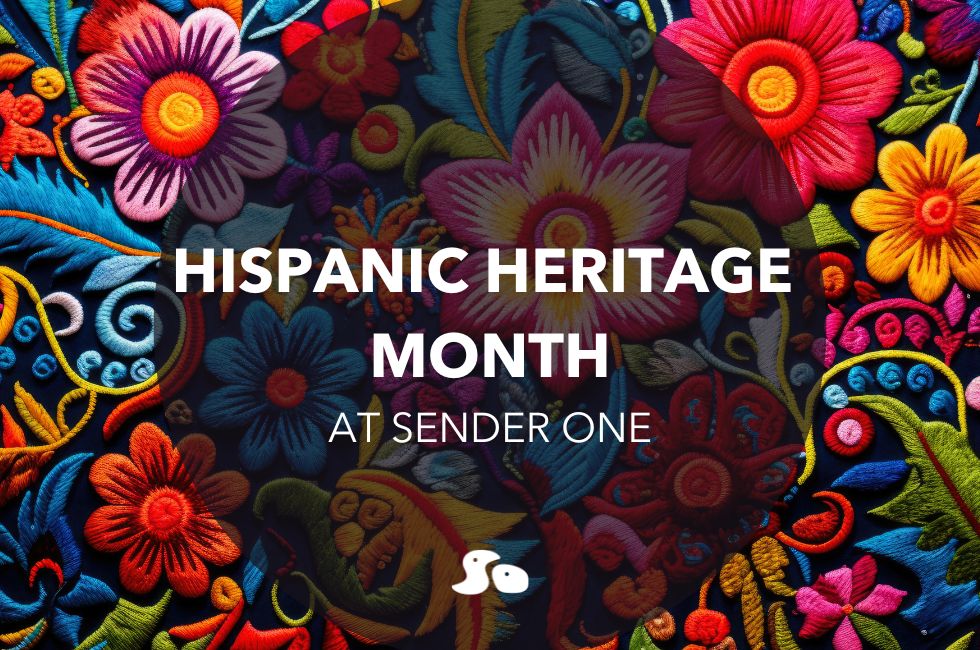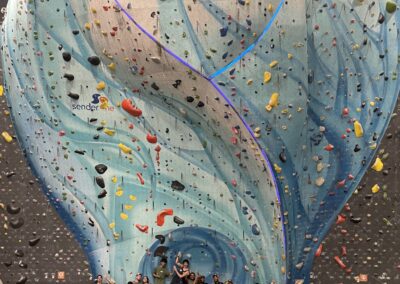Written by Kadisha Aburub
Hispanic Heritage Month was first introduced in June of 1968 as a week-long commemoration of contributions from the Hispanic community. It then was extended to a month-long celebration starting on September 15th.
Among the community you may have heard folks using Latinx, Latine, Latino, or Hispanic used to identify themselves. So we thought we’d address the question “where does the word Hispanic come from?”
The term "Hispanic" was adopted by the United States in the 70s as a way to identify anyone of Spanish speaking origin/ancestry for the Census Bureau. The term creates a sense of community through a connection to Spain. However, it excludes countries in Latin America that do not speak Spanish, such as Brazil. The term "Latino/a" focuses more on the geographic location of Latin America. A common point brought up about the term "Latino/a" is that it uses binary language that a lot of folks within the LGBTQ2IA+ community don't resonate with. That's where the term "Latinx" came to fruition. However, it’s worth noting that most that use this term are young and educated. Typically anyone who identifies within this community will self-identify with whatever term they feel resonates.
This past Saturday, we kicked off Hispanic Heritage Month with the organization Escalemos. When first starting the meet up, the organizers and Sender One staff were decorating for the event and when folks showed up for the event they immediately jumped in and helped with decorating. Folding paper mache with everyone felt reminiscent of being in the kitchen con familia, putting masa on corn husks, having an assembly line, and talking over one another.
We asked a couple of the leaders of Escalemos, Jorge and Lucy, to share a bit a bit about themselves:
How would you describe your cultural identity?
Jorge: "I am a Los Angeles-born native with cultural and ancestral ties to various ethnic groups from Guatemala."
Lucy: "I would describe my cultural identity as Mexican-American. I am first generation. "
What does this month mean to you/how have you been able to celebrate?
Jorge: "Latinx/Latine folk have made numerous contributions to the United States in ways that are integral to the function of our country. Specifically, we can assess our financial contributions to the American economy by noting that Latinx folk are the fastest-growing portion of the national Gross Domestic Product. That said, Latinx folk impact the spirit of our country through our cultural contributions in the realms of music, art, technology, cuisine and beyond.
We constantly see our influence permeate through mainstream culture and the day-to-day lives of Americans as a whole. For example, did you know that the original design for Apple’s IOS emojis was created by a Columbian-American designer, Angela Guzman, during an internship? Additionally, the biggest musical artists in the world have hailed from Latin America in the past few years.This month puts the spotlight on Latinx-Americans and allows us to be celebrated for all that we offer.
As such, I am celebrating this month kicking off our Southern California Escalemos meetups both indoors and outdoors. By bringing our people together to share knowledge and engage in activities centered around joy and growth we allow our communities to empower themselves through increased awareness, mental/physical/spiritual strengthening and networking."
Lucy: "For me, this month holds great significance as it provides an opportunity to showcase and honor my roots, as well as pay tribute to those who came before me. RIP Jenni Rivera & Selena Quintanilla. Being part of the Hispanic community and having an entire month dedicated to celebrating our heritage is an honor.
During this month, I was able to co-host the first Socal Escalemos meet-up with Jorge. This gathering provided a platform for Hispanic individuals to connect, bond, and engage in activities related to our shared interests.
I will also be enjoying some tacos and Micheladas all month long. "
Who is your biggest influence and why?
Jorge: "Mi madre. My mother always made it a point to explore our Guatemalan culture and identity which instilled a sense of connectedness to my heritage. Growing up, we spent 3 months out of the year in Puerto Barrios, Izabal which is the part of Guatemala where she was raised.This was no easy feat since my father passed away at a young age leaving her to raise two kids on her own with limited income.
Having the opportunity to see how the folks in our homeland worked and lived while cohabitating with my native Guatemalan family was jarring at times as the juxtaposition between my life in America, which afforded me more privilege than my family back home, with the hardships in Guatemala proved to be emotionally challenging. Even still, the opportunity to split my time between two countries offered me a unique point of view that instilled a sense of pride in my heritage which set the foundation for the type of community centered social practice I continue to engage in. Specifically, I have an innate desire to experience and uplift different forms of living, thinking, and communicating by uplifting underrepresented cultures.
My mother made this work as an immigrant in a new land which in retrospect was incredibly admirable. She maintained an incredible work ethic, financial savviness and most of all she created a loving home for my sister and I. I am proud to be her son."
Lucy: "Throughout my life, I have been fortunate to have been influenced by various individuals, but there is one person whom I will forever hold in high regard - my dad. He made the courageous decision to leave Guerrero, Mexico, and seek a better life in the United States.
It is because of my dad's sacrifices and resilience that I am able to enjoy the life I have today. From a very young age, he instilled in me the value of resourcefulness. I vividly remember him repeating a particular phrase in Spanish like a broken record when I was just four years old: "If you don't know the answer to something, ask. The probability is high that someone else has the same question but is too afraid to ask." This simple yet profound lesson taught me the importance of seeking knowledge and not being afraid to reach out for help. He taught me early on what it means to have grit, be humble, and be kind."
My identity + climbing:
Jorge: "Climbing both indoors and outdoors allows for substantial placemaking to occur within my life. Placemaking, for me, can be defined as situations, states or environments (within spaces) that create a feeling of connectedness to ourselves and our communities and can be activated through a sense of safety, purpose and excitement.
I engage in placemaking through climbing by facilitating and engaging in community centered experiences. I aim to create value by working with groups that may feel like they are not visible. In climbing, people of color often don’t realize that there are many other people of color also engaging in the sport since we are not the abundantly visible demographic at climbing gyms/crags. Historically we have not been afforded spaces like this. By bringing us together in these spaces we empower our communities by showing them that they can partake in events that put them together with people that have gone through or are currently going through similar experiences so that they can exchange knowledge and support one another. By discovering our potential to interact with different people that share similar ideas and interests we uplift our sense of meaning.
Being able to create community by unifying groups of like minded people at their local gyms/crags around a common interest or the desire for a shared experience demonstrates and puts in practice work that codifies the needs of new spaces and social landscapes. "
Lucy: "Growing up, my parents lacked the knowledge and resources to expose us to the wonders of the great outdoors. I vividly recall the first time I visited Yosemite to climb, I was seventeen. As I stood there, surrounded by the breathtaking beauty of nature, a thought crossed my mind: "I wish my parents could witness this incredible sight too." Now as an adult, I get to take them to these awesome places that climbing exposes me to.
Climbing is not just a mere hobby for me; it is an integral part of who I am. The sheer excitement and joy that fills me when I embark on a climbing adventure is indescribable. Moreover, being able to share this passion with others adds an extra layer of fulfillment to my experiences.
As a female Hispanic climber, I feel honored and proud to represent a diverse community within the climbing world. It is a privilege for me to share my love for climbing with my fellow sisters and brothers."





